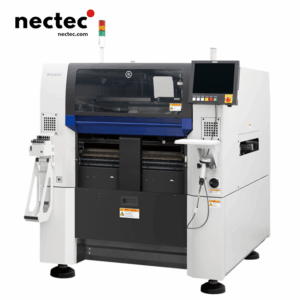Printed Circuit Boards (PCBs) are fundamental components of modern electronic devices, making the demand for efficient manufacturing processes critical. At the heart of PCB manufacturing lies the PCB loading machine, an essential piece of equipment tailored to optimize the loading of PCBs onto assembly lines. In this article, we will delve deeper into what PCB loading machines are, their key features, benefits, and how they can improve efficiency in the electronics manufacturing industry.
What is a PCB Loading Machine?
A PCB loading machine is a specialized piece of machinery designed to automate the process of loading loaded PCB assemblies into soldering machines, such as SMT (Surface Mount Technology) machines and wave soldering machines. By streamlining this process, manufacturers can significantly enhance their production speed, reduce errors, and ultimately increase profitability.
Key Features of PCB Loading Machines
1. Automated Loading Mechanism
The primary feature of a PCB loading machine is its automated loading mechanism. This technology allows for high-speed loading of PCBs, ensuring that the manufacturing process flows smoothly. With the ability to handle multiple PCBs simultaneously, these machines minimize downtime and maximize output.
2. Versatile Compatibility
Modern PCB loading machines are designed to operate with a variety of PCB sizes and types. This versatility is crucial for manufacturers who work with different products and require the flexibility to adapt their processes without significant overhaul. Most loading machines support both rigid and flexible PCBs, catering to diverse market needs.
3. Integrated Quality Control
Today’s PCB loading machines often come equipped with integrated quality control systems. These systems detect any misalignments or defects in the PCBs before they proceed to the next stage of production. By ensuring that only quality PCBs enter the subsequent processes, manufacturers can substantially reduce waste and rework costs.
4. User-Friendly Interfaces
Advanced PCB loading machines typically feature intuitive user interfaces that enable operators to adjust settings quickly and efficiently. This ease of use is paramount in busy production environments where time is of the essence. Additionally, many machines allow for remote monitoring and control, giving manufacturers added flexibility.
Benefits of Using PCB Loading Machines
1. Increased Efficiency and Productivity
One of the primary advantages of utilizing PCB loading machines in the manufacturing process is the significant increase in efficiency. Automation reduces the manual labor involved, allowing for faster processing and a higher rate of production. With the ability to work continuously and at high speeds, these machines lead to less idle time and greater outputs.
2. Enhanced Accuracy and Consistency
Human error is an unavoidable risk in any manufacturing process. However, by integrating PCB loading machines, manufacturers can achieve a greater level of accuracy. The precision of automated loading mechanisms ensures that PCBs are aligned correctly every time, leading to more consistent production quality.
3. Cost Savings
While there is an upfront investment in purchasing PCB loading machines, the long-term cost savings are substantial. Reduced labor costs, decreased waste, and lower rework expenses all contribute to a healthier bottom line. Additionally, the increased production capacity allows manufacturers to meet growing demand without the need to expand their workforce significantly.
4. Scalability of Operations
For manufacturers looking to grow, PCB loading machines offer a scalable solution. These machines can be incorporated into existing production lines, allowing businesses to expand their capabilities without overhauling entire systems. This adaptability is key for companies striving to remain competitive and responsive to market trends.
The Future of PCB Loading Technology
As technology continues to advance, the future of PCB loading machines looks promising. Innovations such as artificial intelligence and machine learning are expected to further enhance automation, leading to smarter machines that can predict maintenance needs, optimize loading patterns, and integrate seamlessly with other production systems. Additionally, the rise of Industry 4.0 and the Internet of Things (IoT) will push the boundaries of connectivity and data analysis, enabling manufacturers to fine-tune their processes like never before.
Choosing the Right PCB Loading Machine
When selecting a PCB loading machine, manufacturers should consider several factors:
- Production Capacity: Assess how many PCBs need to be processed daily to ensure the machine meets production demands.
- Machine Compatibility: Ensure the loading machine is compatible with existing equipment and different PCB sizes.
- Ease of Use: Look for machines with user-friendly interfaces and excellent customer support.
- Maintenance and Reliability: Choose machines known for durability and minimal maintenance requirements.
- Manufacturer Reputation: Research the manufacturer’s credibility and market presence.
Case Studies: Real-World Applications of PCB Loading Machines
Numerous electronics manufacturers have adopted PCB loading machines and experienced substantial improvements in their operations. For instance, Company X, a leading producer of consumer electronics, integrated a high-speed PCB loading machine into their production line, resulting in a 30% increase in output and a significant reduction in labor costs. Similarly, Company Y, specializing in automotive electronics, reported a 25% reduction in defect rates after implementing automated loading control.
Final Thoughts on PCB Loading Machines
In the evolving landscape of electronics manufacturing, PCB loading machines represent a crucial investment for efficiency, quality, and scalability. As manufacturers continue to seek ways to enhance their production capabilities, understanding the functionalities and benefits of these machines can propel their operations forward. Ultimately, staying ahead in a competitive market requires leveraging technology, and PCB loading machines are an integral component of that journey.








